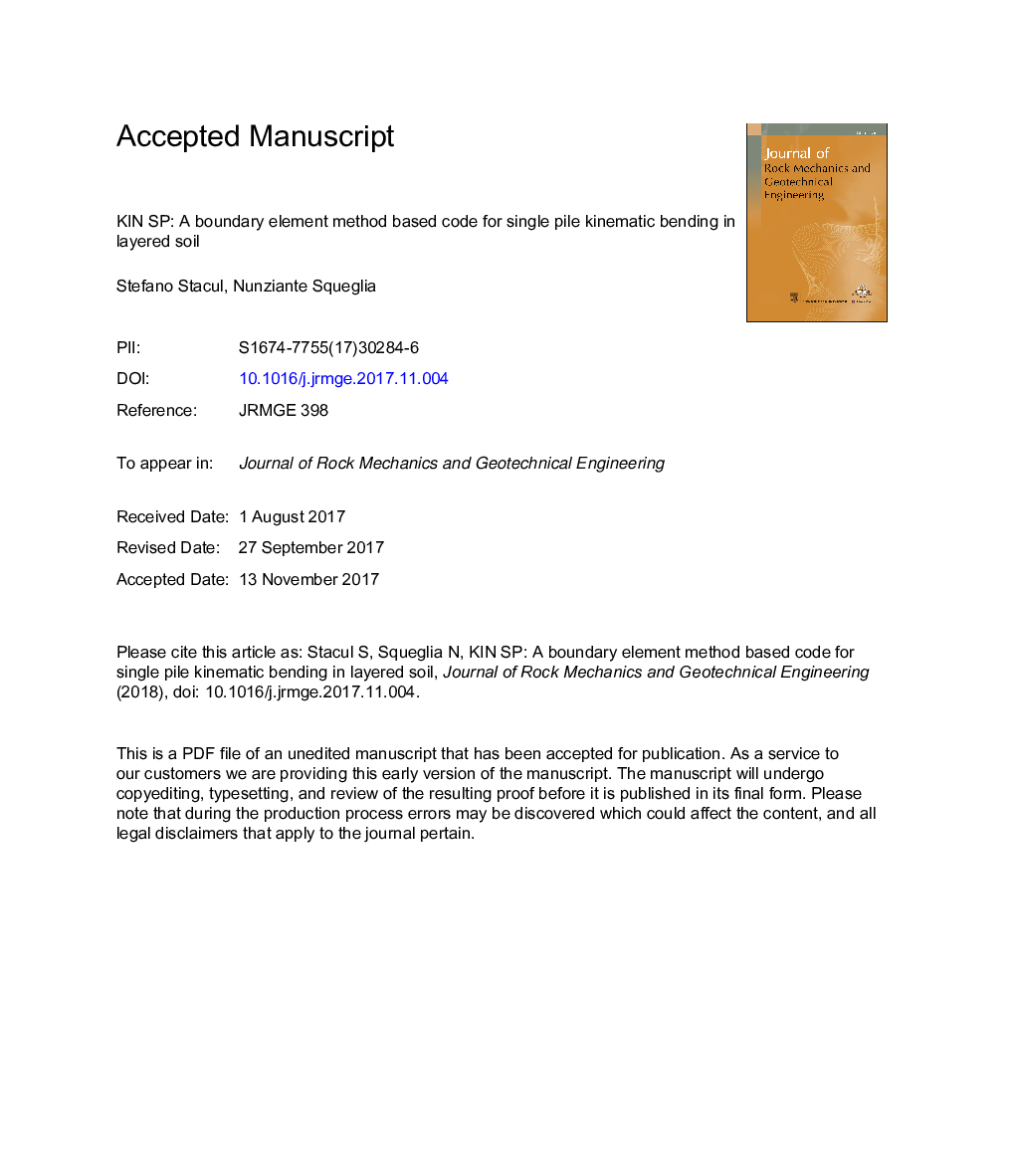| Article ID | Journal | Published Year | Pages | File Type |
|---|---|---|---|---|
| 6752430 | Journal of Rock Mechanics and Geotechnical Engineering | 2018 | 13 Pages |
Abstract
In high seismicity areas, it is important to consider kinematic effects to properly design pile foundations. Kinematic effects are due to the interaction between pile and soil deformations induced by seismic waves. One of the effect is the arise of significant strains in weak soils that induce bending moments on piles. These moments can be significant in presence of a high stiffness contrast in a soil deposit. The single pile kinematic interaction problem is generally solved with beam on dynamic Winkler foundation approaches (BDWF) or using continuous models. In this work, a new boundary element method (BEM) based computer code (KIN SP) is presented where the kinematic analysis is preceded by a free-field response analysis. The analysis results of this method, in terms of bending moments at the pile-head and at the interface of a two-layered soil, are influenced by many factors including the soil-pile interface discretization. A parametric study is presented with the aim to suggest the minimum number of boundary elements to guarantee the accuracy of a BEM solution, for typical pile-soil relative stiffness values as a function of the pile diameter, the location of the interface of a two-layered soil and of the stiffness contrast. KIN SP results have been compared with simplified solutions in literature and with those obtained using a quasi-three-dimensional (3D) finite element code.
Related Topics
Physical Sciences and Engineering
Earth and Planetary Sciences
Geotechnical Engineering and Engineering Geology
Authors
Stefano Stacul, Nunziante Squeglia,
